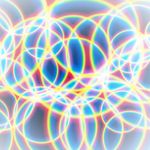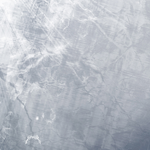 Adobe Community
Adobe Community
Bitmap images print pixelated
Copy link to clipboard
Copied
I am creating a booklet using InDesign made up of images from Photoshop. All images have been converted to 600dpi BMP files. These print nicely in Photoshop, but come out slightly pixelated when printing either directly from InDesign or when exported to a PDF.
Example from Photoshop:
Example from InDesign:
Copy link to clipboard
Copied
With BMP files you refer to 1bit files?
Those need a resolution 4 times as normal images have. E. g. a photo has 300ppi (not dpi), so they would have a resolution of 1200 ppi to get a compareae impression.
Copy link to clipboard
Copied
Hi Jason,
Some recommendations for you to try:
1. Don't use the aged .BMP filetype (early 1990s) for your images. Save them as .PSD in Photoshop. Allow them to be RGB mode. There is no need to save them down to 1-bit bitmap mode, if that is what you mean by BMP.
2. Did you File > Place your 600ppi images into InDesign? That is the correct way to put them in. Do not copy n paste from a photo editor to InDesign. Doing so will give you low-rez 72ppi images.
3. When you test printed from InDesign, did you check the links panel to see that all "placed" images links were up-to-date?
4. What were your PDF settings when you exported to PDF? In particular, what was the ppi of images?
Copy link to clipboard
Copied
Copy link to clipboard
Copied
My suspicion is that regardless of export format, you've reduced these images to (effectively) 1-bit color with no shading or aliasing, so even as PSD at 600ppi, they are reproducing as harsh-edged, jaggy elements. As Mike notes, you have to feed such images to InDesign at around 1200ppi in order for its export algorithms (actually, PDF's, I think) to smooth the edges.
It's tough to go from 2-color back to a shaded, smoothed grayscale (which you want, really, even if the intention is "pure black and white"), but I think that's what you're going to have to do. Back up to earlier versions of your art and work in either RGB or grayscale as you reduce and export them; avoid all steps that will flatten the colors to black+white with no shading values. Then 600ppi grayscale PSD, JPEG or TIFF will give you much better rresults in ID.
┋┊ InDesign to Kindle (& EPUB): A Professional Guide, v3.1 ┊ (Amazon) ┊┋
Copy link to clipboard
Copied
A 1200dpi TIFF is also printing with some noticeable pixelation.
Copy link to clipboard
Copied
This is probably due to the image being grayscale.
Copy link to clipboard
Copied
I've tried both with the mode set to Grayscale (and threshold being applied). and the mode being Bitmap, and the result is similar. TIFF files print with less pixelation than BMP files, though.
Copy link to clipboard
Copied
Additionally, the images printed from photoshop look crisp, without pixelation.
Copy link to clipboard
Copied
Tell us about your printing device?
Copy link to clipboard
Copied
It's a Brother HL-2340DW
Copy link to clipboard
Copied
It's a Brother HL-2340DW
By @Jason28603059yx35
Isn't it HL-L2340DW?
According to the spec sheet - 600x600dpi with 2400x600 in hq mode.
For B/W images, I would do it as TIF - then you can even color it - assign color to black pixels.
Minimum resolution for this printer would be 600x600 PPI.
Copy link to clipboard
Copied
Ok, so the name is one thing, but what are the native printer dialog box settings for that machine?
Bear in mind that what prints is a combination of what you set in the InDesign print dialog box as well as the next dialog box, the printer's print dialog box. Any special settings down in there?
Copy link to clipboard
Copied
There is a setting for dpi, and it's set at 600. Other than that, there's nothing that stands out.
Copy link to clipboard
Copied
None of this is likely to be the printer's issue/fault. Most modern printers, especially SOHO ones, aggressively optimize their output (and need significant effort to override such optimization in the cases where it's not wanted). And as noted, resolution alone can't compensate for unshaded, unaliased images.
┋┊ InDesign to Kindle (& EPUB): A Professional Guide, v3.1 ┊ (Amazon) ┊┋
Copy link to clipboard
Copied
I'm inclined to think this, as well, given that the image quality printed from Photoshop is nice and crisp.
Copy link to clipboard
Copied
Check if any of your Print and PDF export settings can potentially affect the quality, such as:
Print: Graphics > Images
PDF: Compression
Set them to the maximum possible quality and see if it makes a difference.
EDIT: I now see that you did attach your PDF settings summary where I don't see anything suspicious.
Copy link to clipboard
Copied
For this type of art, you need the following:
- Black-and-white (aka Bitmap MODE in Photoshop or Line Art in scanner software)--do NOT use grayscale as it will screen.
- 1200-1500 ppi at actual size (needs to be scanned at this resolution, not upscalled in Photoshop). If you scanner only scans at 600 ppi max (scanners always say dpi for some reason), try to create the art twice as big and change in Photoshop.
- LZW-compressed TIFF (Photoshop should work too, but I think LZW TIffs are smaller.)--
Assuming a good scan (clean glass, etc.), you will output as good as the original. You can colorize it in InDesign and Illustrator if needed.
Copy link to clipboard
Copied
This was process in prior to placing the files in InDesign:
- scan at 1200 as color
- change mode to grayscale
- apply levels to adjust contrast
- do a bit of additional fine-grained cleanup
- apply threshold and/or convert mode to bitmap
This prints nicely from PS but has the slight pixelation in either InDesign or PDF.
Copy link to clipboard
Copied
Normally, I scan directly as black only, aka black-and-white or line art, depending on the scanner software. The will take anything that is reasonable dark and make it 100% black. Light shades of gray will become white.
You shouldn't need to scan as color unless you want adjust the conversion to grayscale for better contrast.
If you have fine details that are not solid black, you can scan as grayscale and convert to Bitmap MODE in Photoshop. Normally, I use the 50% Threshold setting, but if you have a lot of fine detail, you can try Diffusion Dither setting--it will be black-and-white but still look grayscale.
Be sure to match the scan resolution of 1200 ppi when converting to Bitmap mode.
Copy link to clipboard
Copied
>>I've tried both with the mode set to Grayscale (and threshold being applied). and the mode being Bitmap, and the result is similar. TIFF files print with less pixelation than BMP files, though.
Can you send me the image or upload it?
Typically, grayscale will be screend with optimized during printing. Usually, that means they will be down-res'd.
When converting to Bitmap Mode, you need to make sure the ppi setting matches the scan resolution.
(See my previous post for conversion details.)
Copy link to clipboard
Copied
Without trying to be pedantic, lecturing or contrary here, it seems as if all the suggestions for a fix are trying to achieve the one necessary thing while sort of dismissing the one necessary thing. 🙂
Printing absolute black and white without any shading, aliasing or pixelation requires one of two things: completely rectangular objects and lines, or resolution so extreme the eye can't see any jaggy-pixelation on curved or orthogonal strokes. (Any argument?)
We have a fixed resolution here of about 600dpi from the printer. (About as a high a res as any printer not in commercial service.)
So all the solutions here are various ways to force some kind of shading, aliasing, controlled pixelation etc. by various means, and at various levels from the scan and image itself through ID and PDF settings through the printer's native actions.
So — would it just make more sense to accept this factor, and use a very controlled scaling of the "black and white" art to include the kind of very slight shading, aliasing, etc. that Photoshop can achieve, and thus get something close to the optimum possible result without dinking around with extreme resolutions and dithering and still letting the printer more or less have the final say? That is, quit trying to take 1-bit bitmap color as an ideal/requirement and then patch things up all down the chain from there?
(Something I suspect kindly ol' Photoshop is doing without bothering to argue the point with y'all?)
Or have I just not had enough coffee yet?
┋┊ InDesign to Kindle (& EPUB): A Professional Guide, v3.1 ┊ (Amazon) ┊┋
Copy link to clipboard
Copied
I remember reading one that the human eye can't detect resolution higher than 1500 ppi, perhaps a little higher for some. at that resolution, even an angled/curved line would appear to be smooth (depending on output device, of course).
Copy link to clipboard
Copied
This makes sense to me. Ultimately, I'd like the art to be binary, just black & white with no gray at all so whatever can be done to achieve this in PS and print in InDesign or as a PDF would be ideal.
Copy link to clipboard
Copied
Unless you're going to output (directly or indirectly) on a 1200dpi device, smooth lines will depend on some dithering, shading or the like. I think that if you look closely at most printed examples, even the starkest "black" line art has slight curve and angle shading. The eye still sees it as a black stroke.
┋┊ InDesign to Kindle (& EPUB): A Professional Guide, v3.1 ┊ (Amazon) ┊┋
-
- 1
- 2







